In addition to working as an Associate Archivist at Cranbrook, I am also a fledgling volunteer docent at Christ Church Cranbrook. Recently, I gave a tour of the Chancel to test my skills with my teachers. As I prepared, I found there was very little written about the history of the pipe organ at the church. So, where to turn for more information? Cranbrook Archives, of course.
In August of 1925, George Booth and Oscar Murray (of Bertram G. Goodhue Associates, the church architect), started in earnest to finalize their thoughts and feelings about the choice of organ for the church. While the organ itself was installed in January 1928, plans for its ducts and conduits had to be decided early, before the concrete floors were poured.
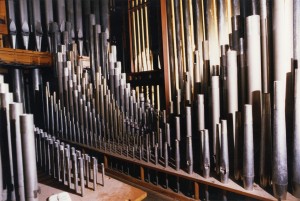
The correspondence suggests that the E.M. Skinner Organ Company was the only company considered. The Boston-based firm was considered America’s finest and most technologically advanced organ builder. Skinner’s specifications for the organ, console, and bench were submitted in October 1925.
George Booth inquired of his colleague Cyril Player to provide comments on the specifications, and Player begins his commentary saying,
“I think I would emphasize gently to them that you want gravity, dignity and softness—the three prime essentials of any church organ, large or small… [gravity] is secured by an adequate and properly-balanced pedal department; dignity by volume of foundation tone in the basic divisions of the instrument; and softness and refinement by skillful voicing with a copious wind stream at a moderate pressure.”
Cyril Player to George G. Booth, November 1925
In passing along the comments to Murray, Booth remarks that, “the desired qualities, viz; gravity, dignity and softness; seems to me peculiarly to express my own feelings and desire.”
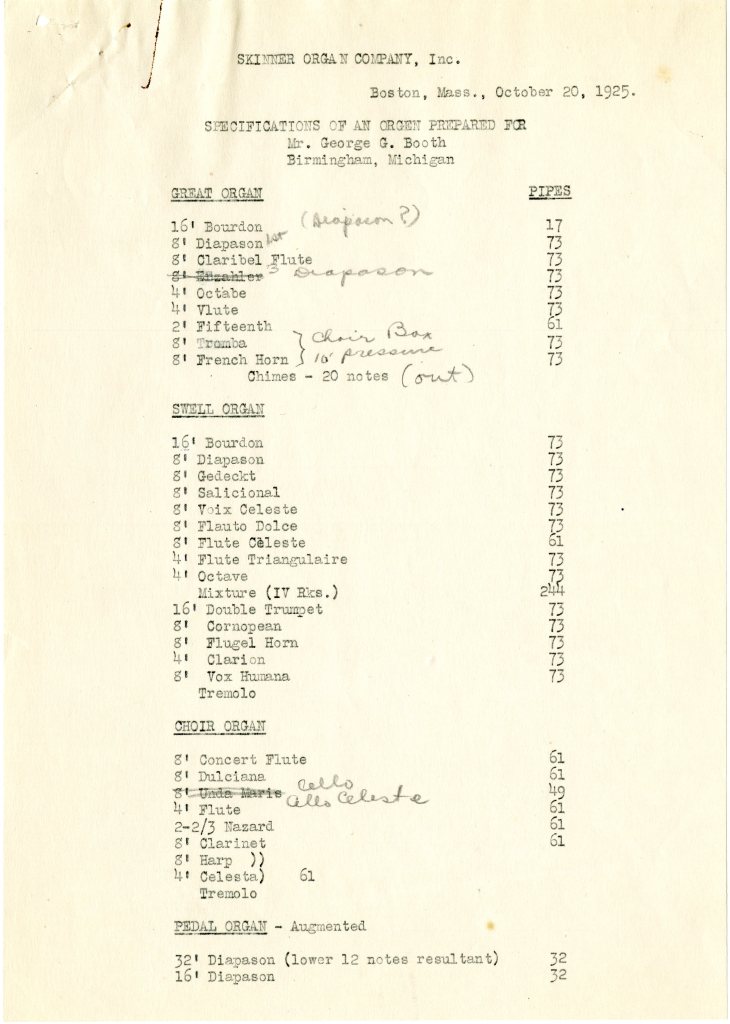

William Zeuch of Skinner Organ Company revised the specifications following some of Player’s suggestions, while some revisions were the suggestion of Henry Willis, the great English organ builder who was a consultant to the firm. The contract for the organ (including the Great, Swell, Choir, and Pedal pipe divisions) was duly signed in December 1925 and work proceeded.
At the same time, a separate contract was made with Alfred Floegel to decorate the organ case doors. Booth wished to confine the oak finish to the exterior of the doors while having the rest richly decorated with color. Booth imagined the opening of the organ doors to represent the opening of the mind. He also envisioned the organ case to read as a triptych (a picture or altarpiece on three hinged panels) when open.
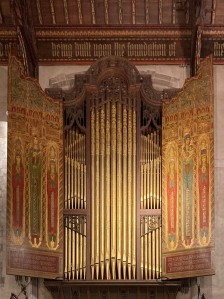
In July 1927, work on the organ console began. The console is where the organist sits to play the instrument, distinguished by its multiple hand keyboards (called manuals), pedalboard, and other controls. Rev. Dr. Marquis requested a change from a 3-manual (Great, Swell, and Choir pipe divisions) to a 4-manual, by adding the Solo division. Zeuch responded positively as it was not too late to build a 4-manual console; however, having already instructed the architect to reduce the dimensions of the organ chamber, which had been too large and would have interfered with the proper effect of the sound in the church, the architect would now need to find space for the Solo division. Room was found above the Sacristy.
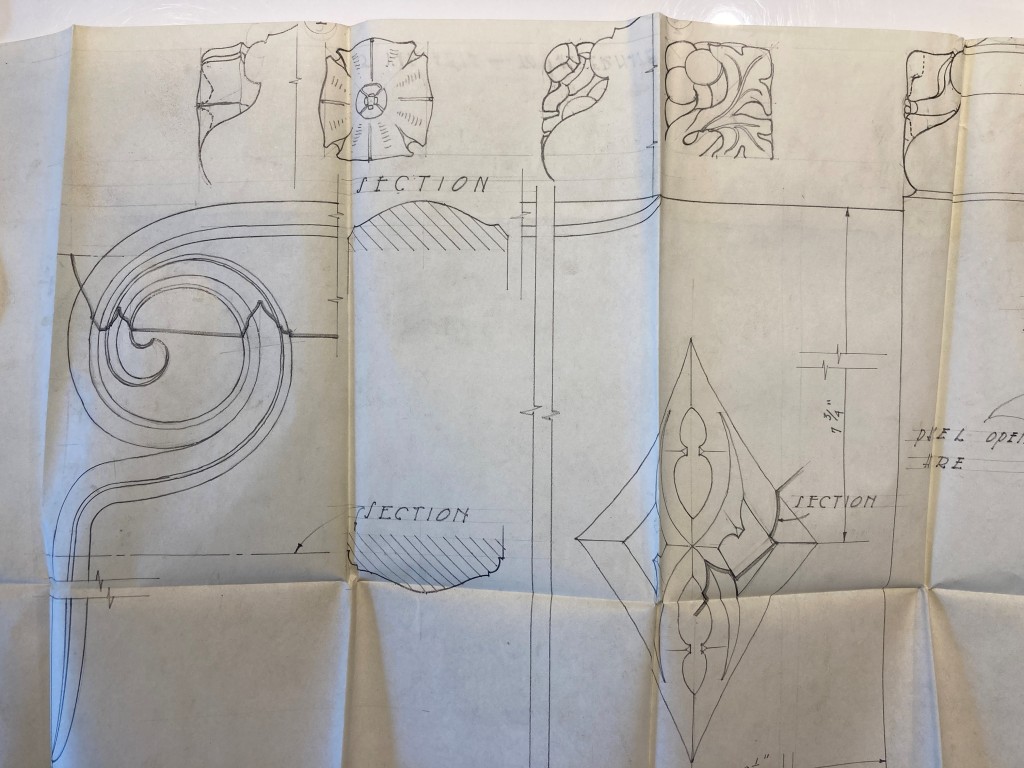
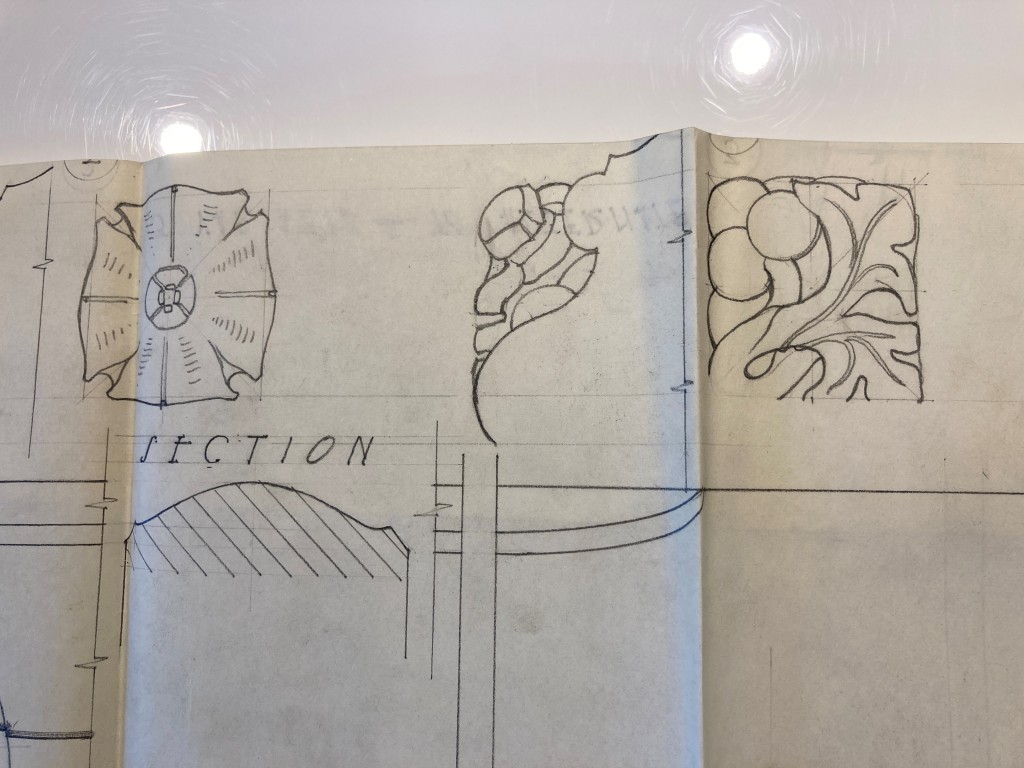

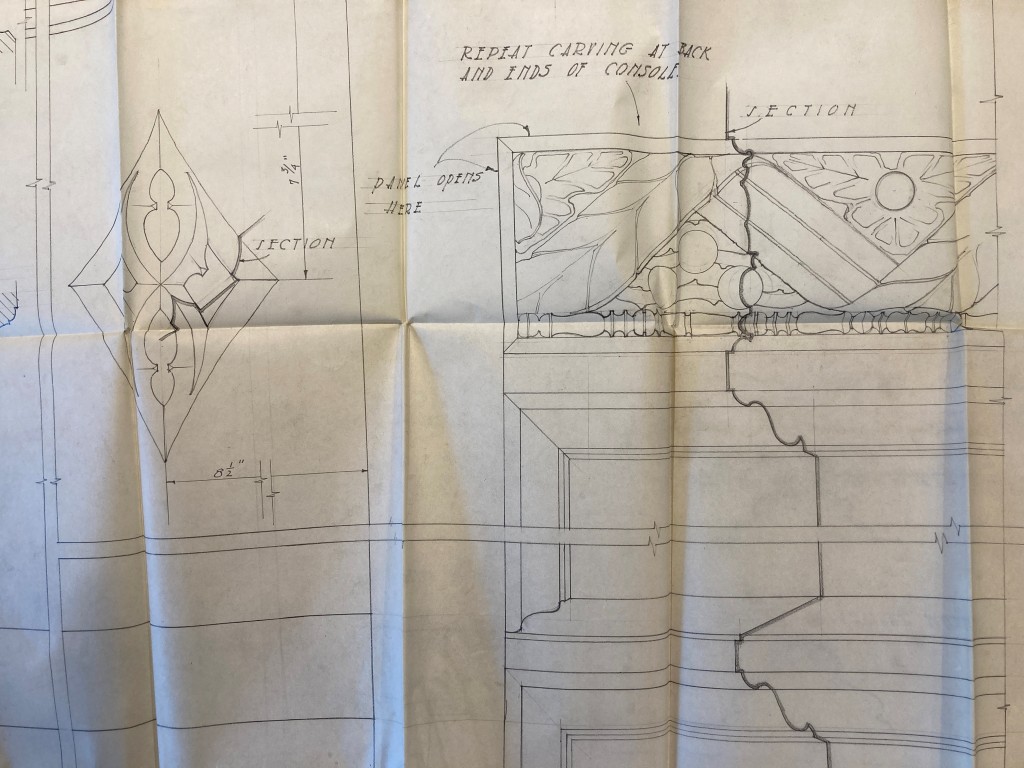
The space and placement of the pipes was another factor that Player had emphasized saying, “The builder can build the best organ on earth, but its sounds will never reach heaven if it is not placed so that the pipes can throw sound freely.”
In August, with Booth’s endorsement, the Solo organ was added to the contract along with a request for the Skinner Organ Company to provide display pipes for the organ display case, finished in natural zinc lacquer. Finally, the Skinner organ departed Boston, Massachusetts, for Birmingham, Michigan, on November 7, 1927, and the installation was completed in January 1928. The organ was now ready to play the processional hymn, “Christ is Made the Sure Foundation,” for the Consecration of the church on September 29, 1928.

When the organ was renovated and revoiced in 1955 by Charles McManis Company, the console was turned 90 degrees so that the organist faced the west to be better able to play and conduct the choir at the same time. The organist at that time, Maurice Garabrant, had also requested the addition of new ranks (sets of pipes), which grew from the original 36 to 70 with a total of 4,069 pipes. The smallest being 7 inches long by 3/8 inch diameter and the largest 16 feet by 12 inches diameter. During the renovation, the Positive and Chancel Swell pipes were relocated to the canopied stalls on the north wall to be closer to the console. The renovation was celebrated with three organ recitals, the first by Claire Coci on April 29, 1956, followed by Frederick Marriott and Marilyn Mason.
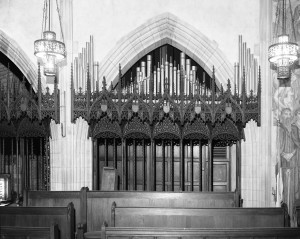
The organ console was turned again to face the choir stalls when the original console was replaced in April 1971 by Reuter Organ Company. After water damage in the 1980s, the organ underwent thorough restoration and renovation in 1996 and 1997 by N. P. Mander Co. of Bethnal Green, London. Over a period of three weeks, ninety-five percent of the 4,096 pipes were disassembled, packed, and shipped to England for restoration. When the organ was reinstalled, an additional 1,400 new pipes were added. The organist now faces east, a change likely made during this restoration project.
Today, the organ has over 5,400 pipes, which were ‘voiced’ and designed to tonally blend with the human voice. Like the human being, the pipe organ uses the control of air to create a ‘voice,’ and its sound is referred to as ‘speaking’.
The pipe organ speaks of beauty and majesty, and with its immense diversity of pitches and tone, it soothes the sorrowful, celebrates with the joyful, and directs the faithful. One of the ways that the spectrum of human experience is received and restored is through the beautiful sound of the pipe organ.
I certainly now know more about the organ at Christ Church Cranbrook–much more than I might ever need for a tour! It just shows that for almost every object at Cranbrook, we have stories in the Archives, just waiting to be told.
–Laura MacNewman, Associate Archivist, Cranbrook Center for Collections and Research
Editor’s Note: The author wishes to thank Christopher Wells, Director of Music, for his kind assistance.
If you are interested in learning more about church history in the Metro Detroit area, please join us for our upcoming lecture, ‘Spiritual Masterpieces: The Twentieth Century Churches of Metro Detroit.‘
Discover more from Cranbrook Kitchen Sink
Subscribe to get the latest posts to your email.

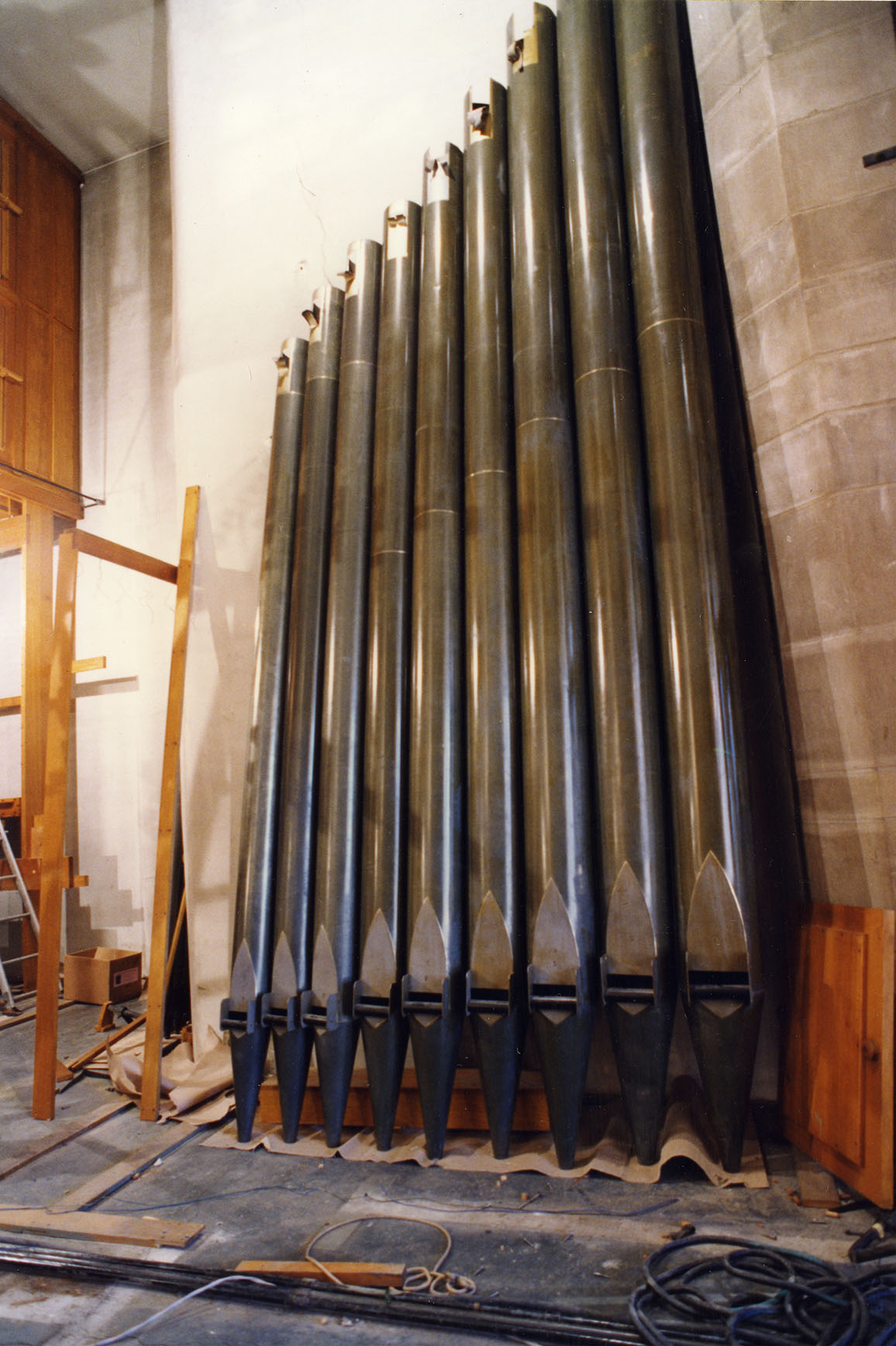

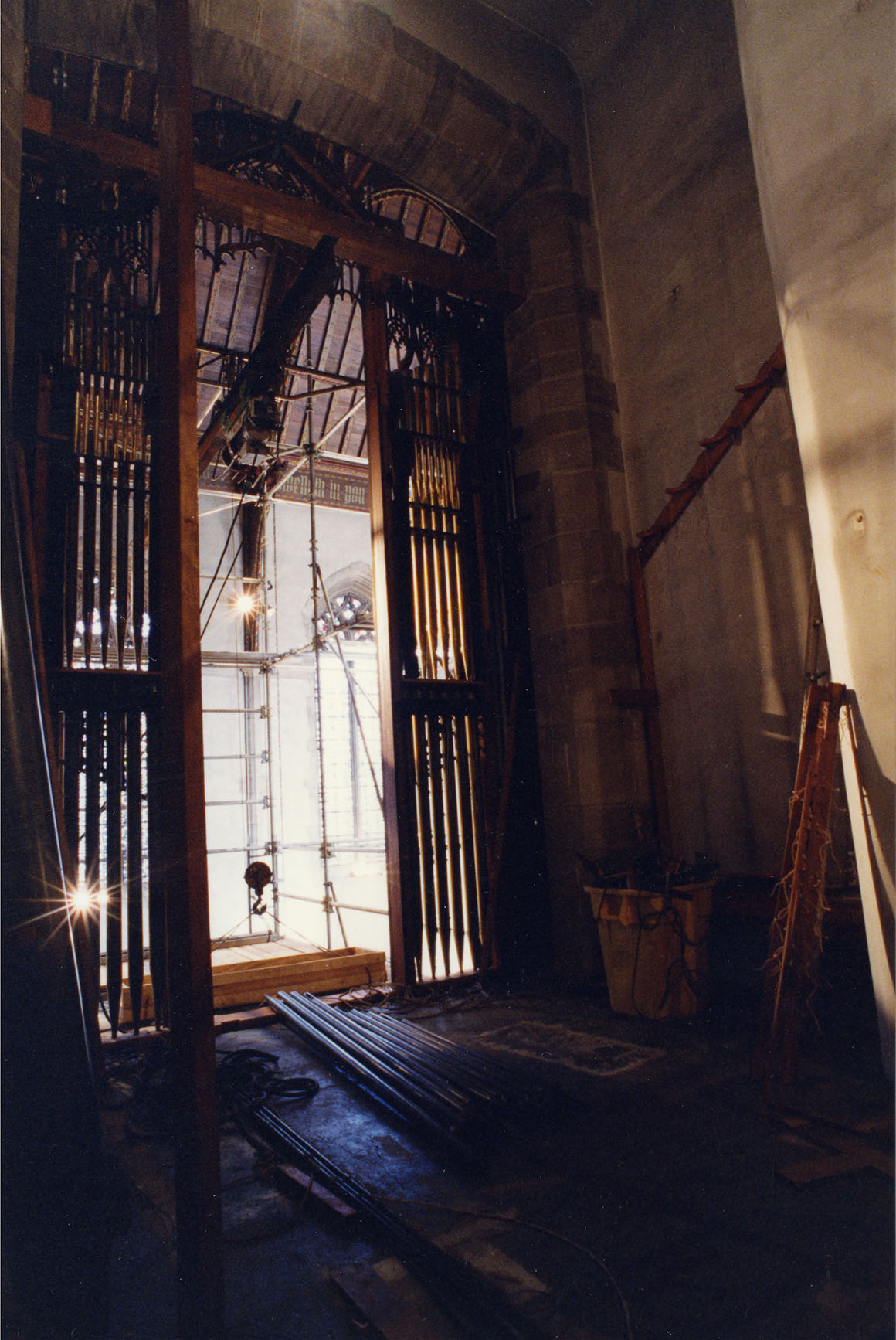
The article about the organ was interesting and educational as usual. Trivia — the organ doors were motorized so that they could be opened at the beginning of services and closed at the end. Sometime in the 1970’s, the motor mechanism broke. When the organ was rebuilt later, the motor mechanism was removed and the doors fixed in place, open. The doors were a gift from James and Jean Booth.
Tom Booth
LikeLike
[heart] Julie Montgomery reacted to your message: ________________________________
LikeLike
Thank you for this detailed and informative piece you put together for us all who love and crave the essence of Cranbrook.
Well done Ms. MacNewman.💛
LikeLike